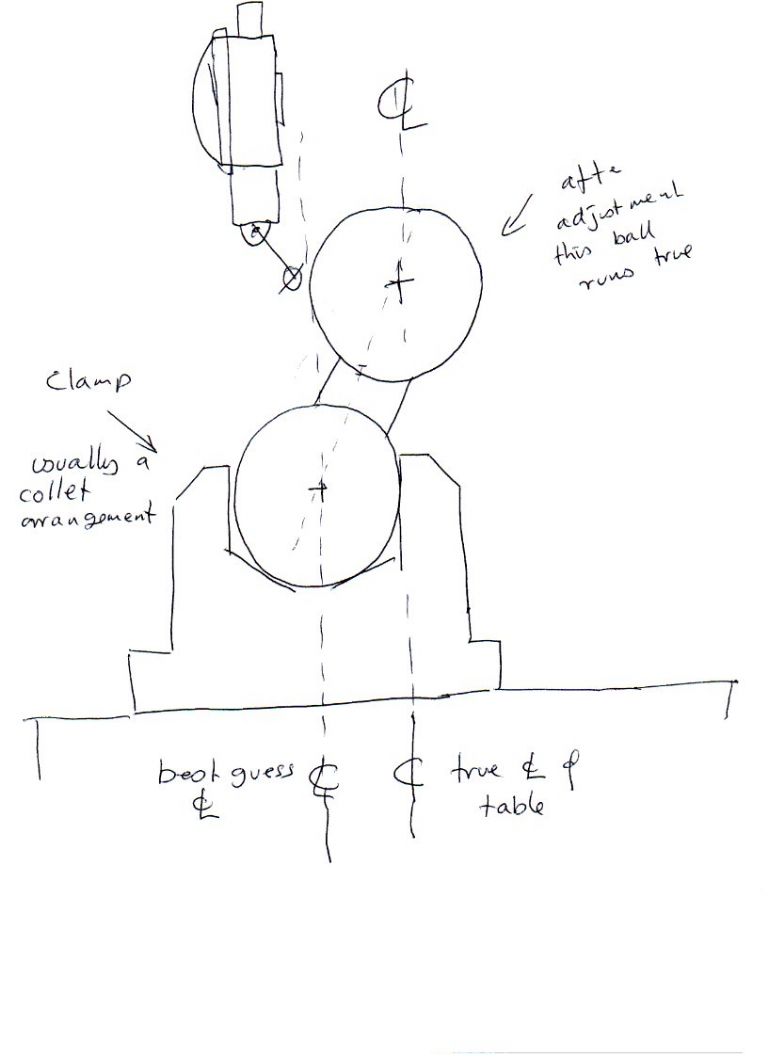Hi Tony .
The important thing really is to ensure that the piece you want to machine is running true in the chuck as you can use a wiggler / centre finder to find the centre using the X&Yco-ordinates .
I will run through how i set up my table from scratch but some may have a quicker way .
I have turned a mandrel that is round and parrallel with a 2mt taper on one end as this fits my rotary table and the other end has a large centre that is also tapped 8×1.25 mm so i can slide a tube over the end then fit a large washer and screw in a bolt to extract the mandrel from the taper without moving the roary table and the mandrel is long enough to protrude from the chuck by 25mm.
I fit the mandrel to the rotary table and clock it with a DTI to ensure it runs dead true then i carefully fit the chuck over this mandrel , gently tighten the jaws and nip up the clamp bolts for the chuck .
I then re – check the mandrel is running true and if it is all good i fully tighten the clamp bolts.
I fit a dead centre in the mill spindle and roughly locate the rotary table where i want it on the mill .
Then i simply locate the dead centre into the centre in the end of the mandrel and as i do the whole lot of this operation with the worm disengaged i give it a turn to ensure the centre is seated.
I then lock the spindle of the mill (z axis) and fit and tighten the clamps for the rotary table , i also lock the mill table and zero my X&Y readouts/dials.
If youre chuck is already mounted to the rotary table and running true you could mount up a piece of round bar (silver steel or something that has been turned round and parrallel ) in a collet in the spindle and then clamp this in the chuck to locate the rotary table but this will not indicate the runout of your chuck .
IAN
Cabeng.


 .
.


